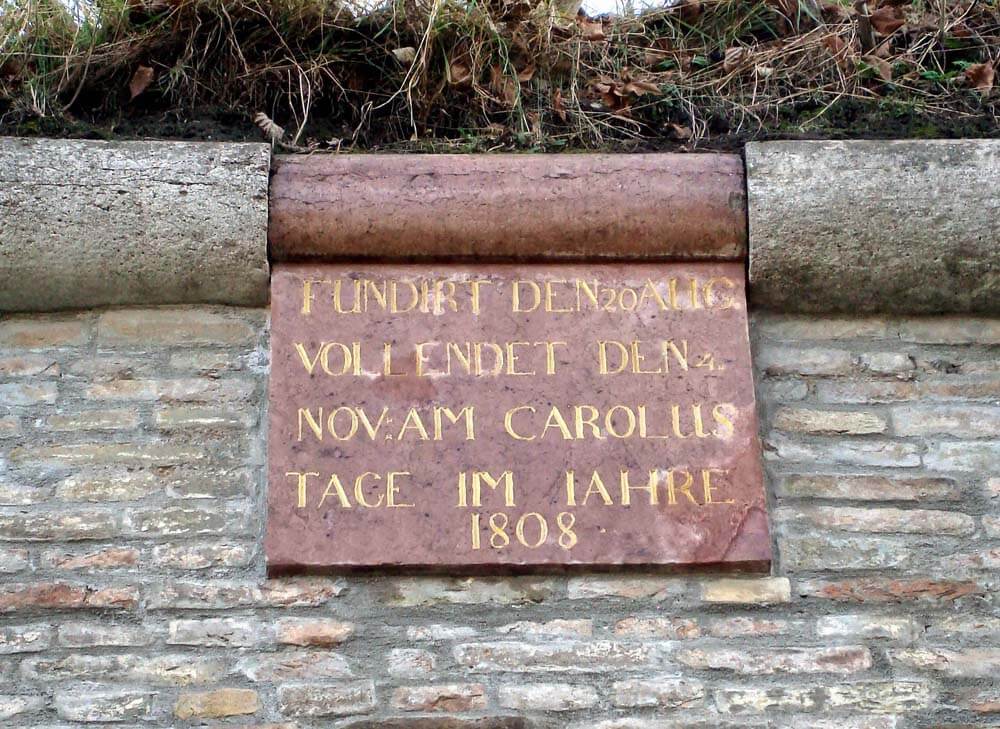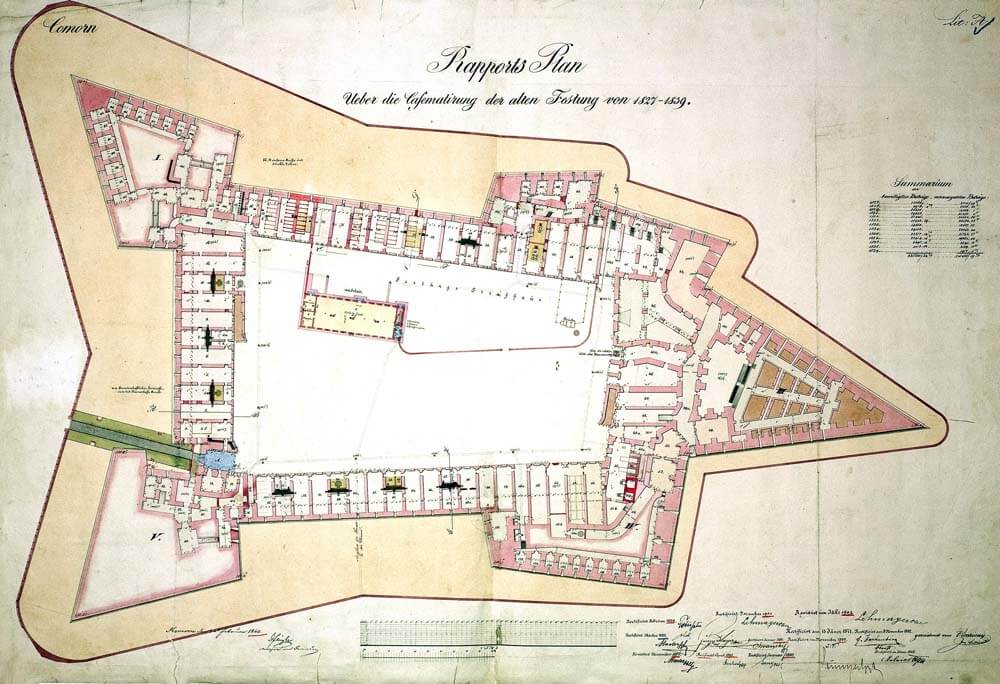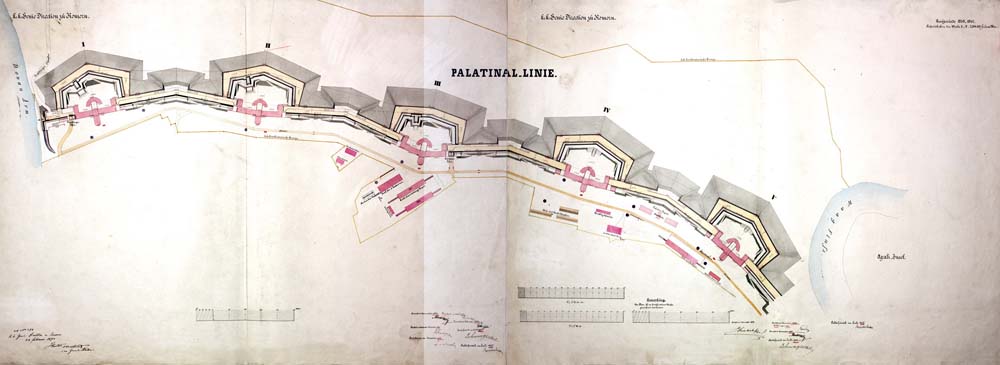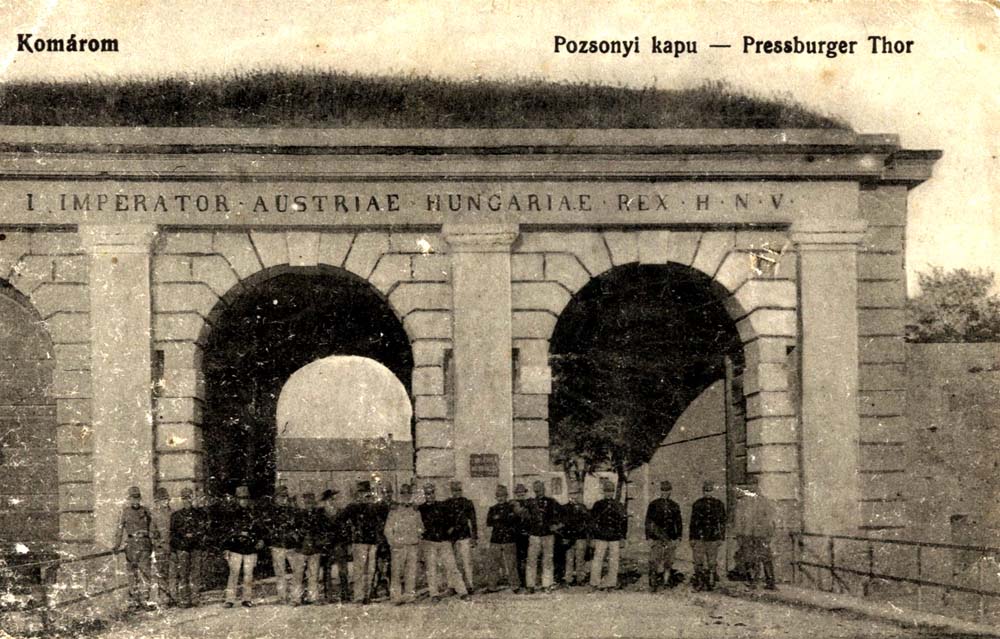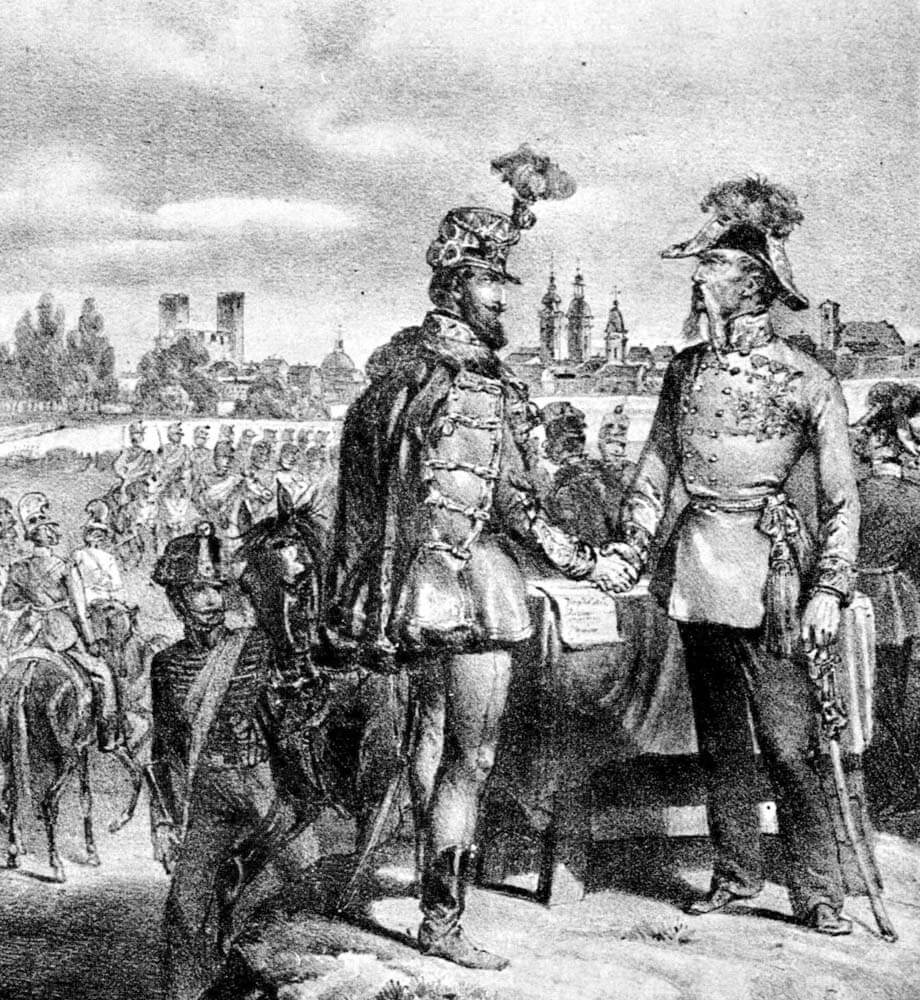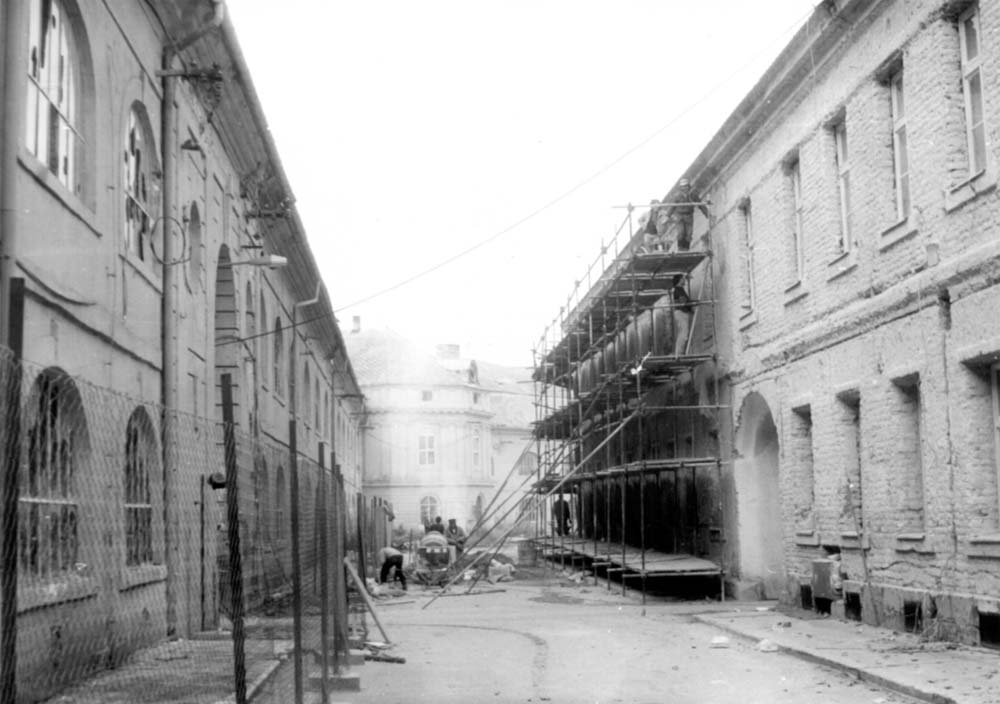Interesting facts
Interesting facts about the system of fortifications in Komárno
- The outer perimeter of the whole system including the fortresses in SR and MR: : 15.5 km
- Built-up area of preserved and existing elements of the fortification system in SR: about 465 000 m2 almost 50 ha
- Length of the Palatine and Váh Lines (from Bratislava Gate to Battery XI): 6.5 km
- Length of communication-shooting galleries—corridors in the walls (curtains and counterscarps) in the Palatine Line: 3.5 km
- Total area of the Central Fortress (Old and New): 132 170 m2 over 13 ha
- Length of the Central Fortress (from the tip of the western bastion – Statue of Stone Virgin to the tip of the eastern bastion of the Old Fortress): 750 m
- The total area of the New Fortress: 98 410 m2 almost 10 ha
- Length of underground passage in bastion Madonna in the New Fortress: 300 m
- Built-up area: 10 840 m2 over 1 ha
- Length of the building: over 500 m
- Number of rooms: 210 (2 floors)
- The total area of the Old Fortress: 33,760 m2 almost 3.5 ha
- Built-up area in the Old Fortress (bastions and curtains): 21 600 m2 over 2 ha
- Number of rooms (casemates) in the Old Fortress: 110 + shooting passages and communications
- Area of the big courtyard of the Old Fortress: 11 800 m2over 1 ha
- Location of the main entrance of the fortress (Leopold Gate): 47°45´15,9´´N 18°08´03,5´´E
- Capacity of the whole system of fortifications in the 19th century: 200,000 soldiers
- Parts of the fortification system on the left bank of the River Danube (SR):
- Old Fortress – 5 bastions
- New Fortress – originally 5 bastions – today Crownwork
- Vah Bridgehead – originally 4 bastions and 6 reduits
- Palatine Line – 5 bastions
- Váh Line – 2 bastions and 4 batteries, plus the Envelope
- Parts of the fortification system on the right bank of the River Danube (HU):
- Danube bridgehead (Star Fort)
- Fort Sandberg (Fort Monostor)
- Fort Igmánd
Fortress Komárno
Important historical data
1241 - 1242
The castle of Komárno withstands the Mongol invasion.
1265
City rights granted by King Béla IV in his charter.
1440
King Ladislaus V is born in the castle on February 22.
1458 - 1490
During the reign of King Matthias Corvinus, the castle serves as his summer residence.
1526
The Battle of Mohács marks the beginning of Ottoman expansion into Hungary.
1529
The fortress is briefly occupied by the Ottomans.
1546
Construction of the present Old Fortress in Komárno begins on March 23, ordered by Emperor Ferdinand I.
1557
Completion of the bastion-type Old Fortress.
1570
A flood devastates the town, destroying parts of the fortress walls.
1572 - 1592
Reconstruction of the damaged fortress takes place.
1585
Construction of two palisades: St. Nicholas (later St. Philip) on the east side of the Váh River and St. Peter on the south side of the Danube River.
1594
The Ottomans lay siege to the fortress unsuccessfully.
1663 - 1673
King Leopold I commissions the construction of the New Fortress, based on plans by Franz Wymes.
1699
The Treaty of Karlowitz is signed, reducing the fortress’s strategic importance.
1745
Empress Maria Theresa grants Komárno the privileges of a free royal town through her charter.
1763
An earthquake devastates Komárno, leaving the town in ruins.
1782
The fortress’s territory is incorporated into the town’s jurisdiction.
1783
1783 Earthquake in Komárno – the Fortress is in ruins
1800
14 June – the battle of Marengo. The victory seals he success of Napoleon’s Italian campaign forcing Austria to peace negotiations.
1805
2 December – the Battle of Austerlitz, the French army, commanded by Emperor Napoleon I, decisively defeats the Russian and Austrian troops.
1807
Francis II visits Komárno in order to see the Fortress, arrival of military officers from Vienna in order to survey the fortress and the surrounding land
1808
Renovation of the Old and New Fortresses – Roconstruction of the New Fortress into crownwork.
1809
Palatine Joseph oversees the construction of the temporary defense line (Palatine Line), which consists of six bastions.
1810
The massive barracks building is constructed in the New Fortress.
1815
Commanders’ building built in the New Fortress.
1827 - 1839
Rebuilding of the Old Fortress – a system of casemates is formed in the walls of the fortress
1839 - 1847
Reconstruction of the Palatine Line, consisting of five bastions, using stone and bricks.
1844
Construction of the Bratislava (Pressburg) Gate, which is part of the Palatine Line.
1848 - 1849
Revolutionary years in Hungary.
1849
28 May Klapka was appointed commander of the fortress in Komárno.
1849
After the battle at Világos, on 27 September, General Klapka hands over the fortress in Komárno to the Austrians under favourable conditions.
1866
Construction of the Váh line consisting of two bastions and four batteries.
1866
The Austro-Prussian war between the German states starts to determine supremacy.
1866
1866 Beginning the construction of two bridgeheads – the Váh and Danube bridgeheads
1871
Construction of Fort Monostor (Sanberg) is complete.
1871 - 1877
Construction of Fort Igmánd (last plan for the fort dates back to 1874).
1876
Komárno is devastated by a flood.
1877
The entire system of fortifications is completed.
1918
With the fall of the Austro-Hungarian Monarchy, the Czechoslovak Army begins to use the fortress.
1968 - 1990
The Central Fortress is used by the Soviet Army.
1979
The purposeful rehabilitation of the buildings within the fortification system begins with the reconstruction of Bastion VI.
1991
The Central Fortress is taken over by the Czechoslovak Army and, following the split of Czechoslovakia in 1993, it is used by the Slovak Army.
2002
The system of fortifications at the confluence of the Danube and Váh Rivers in Komárno (Slovakia) and Komárom (Hungary) is placed on the preliminary list of UNESCO World Cultural Heritage sites.
2003
The Town of Komárno purchases the Central Fortress from the Ministry of Defence of Slovakia, and the fortress officially ceases to be used for military purposes.

























